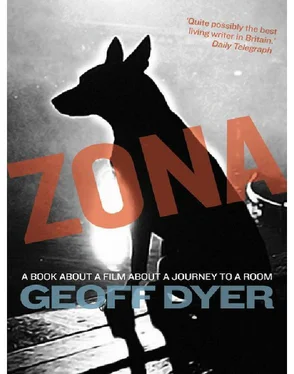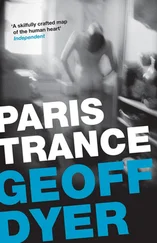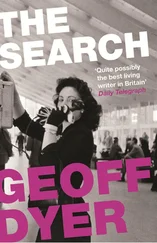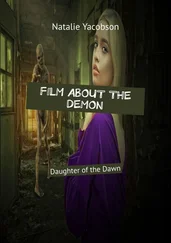After this little set-to Writer, naturally enough, is in need of a drink. Stalker, uncharacteristically, seems to want one himself. Writer hands him the bottle but any hopes he may have entertained that Stalker will take a slug, that this might after all turn out to be a pedestrian equivalent of a booze cruise, prove short-lived. The mood of buoyant optimism that animated Stalker after his solitary walk proves almost as short-lived; his face has reverted to its default look of profound dismay, of generalized and specific woe. Stalker pours away the contents of the bottle, a gesture that could also be construed as some kind ofpuja: making an offering to the gods of the Zone, wetting their whistles.
Undeterred, Writer insists on going straight ahead, at his own risk, with or without a drink. The Room looks even nearer than previously thought: about fifty yards? He strides ahead confidently enough but, when the camera jumps in close, right up to the back of his head, he seems to be moving with considerable trepidation. In its way it’s a terrific bit of acting on Solonitsyn’s part: rarely has the back of someone’s bald head expressed such a rich combination of bravado — I said I’d go, so I’ll keep going! — and naked dread. 23
Stalker has felt the wind picking up but it is only when Writer is seen from the front, making his hesitant way forwards, that we become aware of this wind. The branches sway and bend more deeply. The breeze is becoming a sudden gale. We have seen this wind before, near the beginning of Mirror, sweeping past the same actor, stopping him in his tracks as he walks away from the woman he has just met, sitting on a fence. Already sentient, the landscape becomes suddenly animate. Writer insists that the landscape amounts to no more than its physical features, which are susceptible to empirical measurement and conscious calculation — that from here to there can only take so long. At this moment the movement of wind through the trees shows the unconscious making itself felt, becoming visible, staking its claim. There is an abrupt accumulation of noise, the flap of birds’ wings. A voice orders, Stop! Don’t move! and the camera withdraws, sniper-like, more deeply into the building. Whose order was this? Writer comes scurrying back like a whupped dog, demanding to know who told him to stop. Stalker? No. Professor? Not him either. It’s your own fear, Professor tells him. You’re too frightened to go on so you invent a voice telling you to stop. That sounds about right, but the thing about the Zone is that it’s always subtly reconfiguring itself according to your thoughts and expectations. You want it to seem ordinary? It’s ordinary — or is it? And at that moment something occurs to make you think maybe it’s not ordinary, whereupon it does something briefly extraordinary. (Or does it?) Whereupon it becomes quite ordinary again. The Zone manifests itself even as it withholds itself — and vice versa. 24
One thing’s for sure: the Zone has comprehensively disabused Writer of Kundera’s distinction between ‘the world of routes’ and ‘the world of roads and paths [where] beauty is continuous and constantly changing; it tells us at every step: “Stop!”’
Stalker says he has no idea what goes on in the Zone when there’s no one here; but as soon as people enter it the Zone becomes a system of traps. (One of the big unanswerables: what is the Zone like when there is no one here to witness it, to bring it to life, to consciousness? I was going to ask, rhetorically, if the Zone even existed in the absence of visitors, but one of Tarkovsky’s technical preferences suggests that the answer would be yes. The characters are all the time stepping into shot, into an already established frame: screen and Zone are there waiting for them, watched and waiting.) Stalker puts the emphasis on what we want from the Zone, on the needs it answers. But there is always the latent, unasked question of what the Zone needs from the people who come to it, from us. What use is a miracle if there is no one there to witness it?
Everything that happens depends on us, says Stalker. The relationship between pilgrims — even the most sceptical or outright cynical, even those who don’t consider themselves pilgrims — and the Zone is absolutely recipro-cal. To be in the Zone is to be part of the Zone. It may be impossible to tell whether a given action is initiated by people or place but the feeling that the Zone is an active participant in whatever occurs becomes increasingly tangible. Stalker is framed against a green so dark it is almost black — what Conrad, with his irresistible urge to overegg any and all puddings, would have called an impenetrable darkness. This darkness makes Stalker’s face and blue eyes burn more brightly as he speaks. With what? With the intensity of his belief, but also — and it is this which distinguishes him from jihadists and born-again Christians — with the intensity of his despair. The Zone is not simply a source of solace, the heart of Marx’s heartless world, it is a source of torment, a system of traps that constantly tests, teases and threatens not just his clients but Stalker himself. No one is immune to the capriciousness of the Zone. And another thing, too, separates him from the jihadists. One of Tarkovsky’s strengths as an artist is the amount of space he leaves for doubt. In Grizzly Man, Werner Herzog looks into the eyes of the bears caught on film by Timothy Treadwell and decides that the chief characteristic of the universe — or ‘the jungley’ as he metonymically termed it in Burden of Dreams —is ‘overwhelming indifference’. For Tarkovsky the artist, despite his Russian Orthodox Christian faith, despite his insistence that the epic scenery of Utah and Arizona could only have been created by god, it is an almost infinite capacity to generate doubt and uncertainty (and, extrapolating from there, wonder). This, it hardly needs saying, is a far more nuanced position than Herzog’s. The story of Porcupine, Tarkovsky said later, may have been a ‘legend’ or myth, and spectators ‘should doubt… the existence of the forbidden Zone’. So to give oneself entirely to the Zone, to trust in it as Stalker does, is not only to risk but embrace betrayal by the principle from which he draws his life. That’s why his face is a ferment of emotions: everything he believes in is threatening to turn to ashes, the ledge he clings to is poised to crumble beneath the weight of his need for it, the weight that also supports it.
Another word on that wind, the wind that springs from nowhere: Tarkovsky is the cinema’s great poet of stillness. To that extent his vision is imbued with the still beauty of the Russian icons, like the ones painted by Andrei Rublev. But, as he himself explained, this stillness is the opposite of timeless: ‘The image becomes authentically cinematic when (amongst other things) not only does it live within time, but time also lives within it, even within each separate frame. No “dead” object — table, chair, glass — taken in a frame in isolation from everything else, can be presented as [if] it were outside passing time, as if from the point of view of an absence of time.’ Tarkovsky’s stillness is animated by the energy of the moving image, of cinema, of which the wind is expression and symptom. Out of this comes the most distinctive feature of Tarkovsky’s art: the sense of beauty as force. 25
Professor sums up Stalker’s little sermon: so the Zone lets the good ones pass and the bad ones die? (Well, it’s more complicated than that, obviously, and simpler too.) Stalker doesn’t know. It lets pass those who have lost all hope, the wretched, he says in an agony of wretched-ness, never once realizing that he might (by definition) be among their number. Does wretchedness ever have this capacity to transcend itself? Or is it simply a path to further wretchedness? The fathomless implications of this can be seen pressing down on Stalker as he turns from the darkness and walks into the light, where Writer and Professor are framed against the drifting mist and trees of the Zone.
Читать дальше












